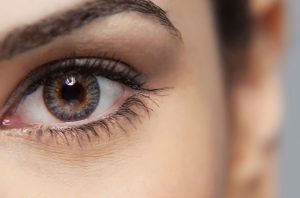
Ο ήλιος μπορεί να προκαλεί ευεξία, αλλά οι φωτoκαταστρoφικές δράσεις της ηλιακής ακτινοβολίας στο δέρμα προκαλούν φωτογήρανση.
Τι είναι η φωτογήρανση
Η φωτογήρανση επηρεάζει την εμφάνιση, υφή και την ελαστικότητα του δέρματος. Το φωτογηρασμένο δέρμα είναι τραχύ και ξηρό, εξαιτίας της καταστροφής του υδρολιπιδικού φιλμ και της πάχυνσης της κεράτινης στιβάδας της επιδερμίδας.
Εμφανίζονται ρυτίδες τις οποίες προκαλεί η απώλεια κολλαγόνου και ελαστίνης καθώς και η αφυδάτωση. Επίσης παρατηρούμε δυσχρωμίες και πανάδες, δηλαδή δερματικές βλάβες καφέ χρώματος οι οποίες είναι αισθητές στο μάτι. Οι δυσχρωμίες φείλονται στην αύξηση των μελανοκυττάρων ή στην υπερβολική παραγωγή μελανίνης στο συγκεκριμένο μέρος της επιδερμίδας.
Σε περιπτώσεις χρόνιας σοβαρής ηλιακής καταστροφής, εμφανίζονται πιο μεγάλα ‘μαύρα στίγματα’ (φαγέσωρες) στις πιο λιπαρές περιοχές του προσώπου, όπως η μύτη και το μέτωπο. Τα ηλιακά σημάδια (ή η υπερκεράτωση) προκαλούνται από την βλάβη του DNA των κυττάρων που έχουν απορροφήσει ακτινοβολία και συνδέονται με εμφάνιση καρκίνου του δέρματος.
Ένα ακόμα σύμπτωμα της φωτογήρανσης είναι και η χαλάρωση, είτε του δέρματος του προσώπου, το οποίο εκτίθεται καθημερινά στον ήλιο, είτε του δέρματος του λαιμού, όπου συχνά ξεχνάμε να εφαρμόσουμε αντηλιακό. Ειδικά στο δέρμα του λαιμού, εμφανίζεται ελάστωση, ένα φαινόμενο που αποκαλείται ‘λαιμός γαλοπούλας’ ή ‘δέρμα χήνας’ και παρατηρείται στο λαιμό και στο ντεκολτέ.
Τέλος, το χρώμα του δέρματος ίσως κιτρινίζει και εμφανίζεται ωχρό, καθώς έχει ανεπάρκεια σε αιμοφόρα αγγεία, λόγω της καταστροφής που υπέστησαν κατά την έκθεση στον ήλιο.
Θεραπείες για φωτογήρανση
Η επιδιόρθωση του κατεστραμμένου από τον ήλιο δέρματος γίνεται με την κατάλληλη θεραπεία που θα σας υποδείξει ο Δερματολόγος. Υπάρχουν διάφορες θεραπείες που αντιμετωπίζουν τη φωτογήρανση, με εξαιρετικά αποτελέσματα, αλλά δεν υπάρχει μια θεραπεία που να ταιριάζει σε όλους, καθώς εξαρτάται από τον τύπο του δέρματός σας.
Συμβουλευτείτε έναν από τους Δερματολόγους μας, οι οποίοι έχουν πολυετή εμπειρία στην επιδιόρθωση βλαβών από τον ήλιο και θα σχεδιάσουν το κατάλληλο εξατομικευμένο για εσάς θεραπευτικό πρωτόκολλο.





